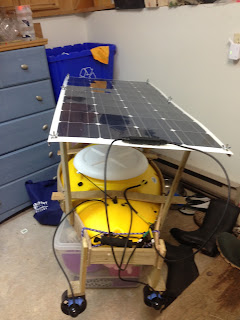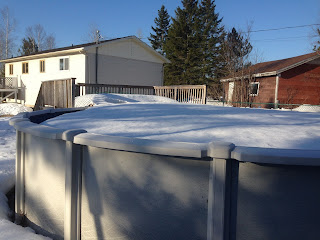The code for controlling the boat over a network interface works fine, but it's the Bluetooth connectivity stuff that is giving me lots of grief. Unfortunately Apple doesn't make it simple for developers to integrate Bluetooth into their software. Apple's "CoreBluetooth" libraries for low energy Bluetooth devices look promising, but they are quite a bit different than any other Bluetooth software I have done in the past for Android or the PC, so may require a lot of time to figure out. At this point I'm considering just setting it aside and moving on to other things.
The North American cell modem that was back ordered and scheduled to ship this week got delayed again, so I canceled that order and decided to look for an alternative. Similar standalone cell modems seemed to be priced at ~ $300 or more, but something like a Bell or Rogers turbo stick (for getting cell data on a tablet or laptop) were less than $100, although they required signing up for some sort of plan which I didn't look into. Since I already had the SIM card with 100 MBytes / month of data from Bell, I decided to just get an Android smart phone for a little over $100. It can be added to the boat for cell / data connectivity, communicating to the Raspberry Pi Compute module over Bluetooth. It will also afford some gigabytes of data storage.
There was a steering committee report released recently to the New Brunswick government that provides a good summary of the testing and results that have been accomplished in the Parlee Beach and surrounding area. The report itself is available here: http://www2.gnb.ca/content/dam/gnb/Departments/eco-bce/Promo/Parlee_Beach/pdfs/parlee_beach_water_quality_finalreport-e.pdf
The results indicated that the water quality at the beach location was nearly always within the safe limits specified in the Canadian Recreational Water Quality Guidelines (https://www.canada.ca/en/health-canada/services/publications/healthy-living/guidelines-canadian-recreational-water-quality-third-edition.html). The times when the limits were exceeded seemed to be strongly correlated with wind direction (higher bacteria concentrations were measured at the beach when the wind was from the north or northwest), and possibly some weaker correlation with tides, rainfall, and beach traffic. It was also interesting to note that the bacteria levels measured in the watershed around Shediac Bay were considerably higher than those measured at the beach itself. That could be why winds from the north or northwest resulted in higher concentrations of bacteria at the beach: the bacteria from the watershed were pushed back to the beach by the wind.
So where does AMOS fit in with the testing that has been done so far and the recommendations for future work that the steering committee report described? The second recommendation that the report listed was to "Apply the hydrodynamic model to validate the transport paths related to actual discharges into the Bay (concentrations, volumes, weather conditions)." In addition to collecting samples at various locations in the Bay itself or in the surrounding rivers and streams, AMOS could be allowed to drift at various times and locations in order to estimate probable transport directions that bacteria might follow due to winds, tides, and currents. With a relatively rapid sample evaluation time (less than 12 hours vs. the current 48 hours) this might be able to provide a reasonable estimate of beach water quality, thereby accomplishing the 6th recommendation of the report: "Develop and validate a tool for predicting water quality, based on relevant environmental and meteorological data, which could be used by the Medical Officer of Health (MOH) to issue “No Swimming Advisories” at Parlee Beach. A predictive tool would address concerns with the 48-hour delay related to analyzing water quality samples". Of course, even better than a predictive tool would be a device for obtaining real-time bacteria concentrations on an ongoing, continuous basis. That is the long-term goal of AMOS.







